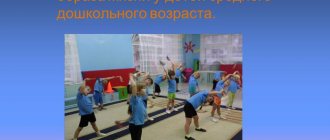8 minutes
Published:October 26, 2016
| (0) |
A healthy lifestyle has already become a full-fledged family culture. Giving up bad habits and focusing on sports have become fashionable. Therefore, more and more people are becoming interested in healthy lifestyles and attracting not only adults, but also children into their ranks. This trend has a positive effect on a person’s overall health, promotes strong immunity, good health, a beautiful figure and a positive attitude. By teaching children a healthy lifestyle, you help them live a long and happy life, full of bright and positive moments. This is the best care for loved ones, which will definitely bear fruit in the near future. A healthy lifestyle is no less important for children than for adults. After all, this is a fundamental principle of child development in the areas of moral and physical culture. The earlier you start the habit of eating right and exercising, the more benefits it will bring in the future.
Components of a healthy lifestyle
The main components of a children's healthy lifestyle are:
- playing sports and introducing physical activity as a regular habit;
- regular walks in the fresh air;
- proper nutrition.
maintaining a healthy lifestyle for the whole family;
All physical activity must be appropriate for the child’s age and take into account the characteristics of his health. Regular exercise under the guidance of experienced trainers is the best option for maintaining a healthy lifestyle for children. The European Gymnastics Center offers you classes in a comfortable environment and on a convenient schedule. A lot of positive emotions, playful training and socialization of each child is the minimum set of services that we offer to each client.
Family healthy lifestyle
Before telling or explaining something to your child, show it by personal example. This will be the best motivation for him, because a son or daughter always strives to be as similar as possible to their parents. Therefore, when talking about a healthy lifestyle, make sure that you yourself do not violate its basic principles. It is quite easy to become a worthy example for your child.
Together everywhere.
Take regular walks. But don't limit them to shopping. Go to the park, go out into nature, visit children's outdoor playgrounds.
Eat the right foods.
Teach your children to eat healthy. Avoid visiting cafes that serve fast food. Add more vegetables and fruits to your diet, and drink more clean water together. Avoid carbonated drinks and packaged juices if possible.
Remember mobility.
Don't forget about ball games, visiting the pool, skiing and skating. A morning run is a great way to recharge your energy for the day ahead, not only for you, but also for your children.
One hobby.
Involve your child in your hobbies. This will not only help in his upbringing and general development, but will also unite the family in an interesting hobby.
Rejection of bad habits.
Remember that a child always looks up to his parents and tries to imitate them in everything. To instill in him a correct perception of the world, give up smoking, alcohol, high-calorie snacks and regular evenings in front of the TV.
Fundamentals and methods of creating a healthy lifestyle
A healthy lifestyle has 7 main “pillars”: physical activity, a balanced diet, the absence of bad habits, hygienic care, adequate sleep and rest, wellness treatments and an emotional state.
If you take care of all these aspects, your quality of life and well-being will improve significantly. Maintaining proper nutrition
The health of internal organs, appearance, well-being and immunity directly depend on what we eat. A healthy lifestyle involves eliminating, or at least reducing, flavorings, flavor enhancers, fatty foods, dyes and preservatives.
Here are the basic rules:
- You should neither starve nor overeat - both have a negative impact on your well-being. You should not feel hungry and, conversely, overeat. Try to ensure that your daily calorie intake is 1700-1900 kcal (the norm for women leading a sedentary lifestyle; for men the daily calorie intake is approximately 300-400 kcal higher).
- Drink clean water. It is advisable to drink 1.5 to 2 liters of water per day (not tea, coffee, juice, etc.)
- Reduce the amount of sweets in your diet. If you want something sweet, give preference to fresh vegetables and dried fruits. You can also consume dark chocolate in moderation.
- Eat small meals at least 4-5 times a day. At the end of the meal, you should still feel slightly hungry.
- The daily menu should contain meat or fish, vegetables and fruits, cereals, and dairy products. Eat a varied diet.
- It is advisable to have dinner at least 2 hours before bedtime. It is not advisable to eat immediately before bed.
- Eliminate fast food, fatty and smoked foods from your diet.
- Give preference to boiling, stewing or baking foods.
If you haven't watched your diet before, it may be difficult for you to suddenly change your diet.
Try to start small - remove fatty sauces and foods that contain them from your diet, avoid flavor enhancers and chemical additives in food, give up fast food products, convenience foods, confectionery, increase the share of fruits and vegetables in the menu. Completing each of these points will be a step towards a healthy diet. Physical activity
Lack of physical activity leads to a decrease in metabolic rate, the development of diseases of the musculoskeletal system, cardiovascular and neurological pathologies.
If your job does not involve movement, try to increase your activity yourself. It is considered normal to spend at least 1 hour a day in motion (this is about 8000-10000 steps). Scientists have proven that every minute of activity affects the body's condition in the long term - this means that even climbing the stairs, rather than taking the elevator, already brings you closer to health.
You can increase your daily activity by making it a habit to start and end your day with a light workout.
If you go to work by public transport, get off 1-2 stops earlier and walk this way. It is very useful to take breaks if you have a sedentary job. On weekends, do some fitness, go for a walk or go to the pool. These measures are quite enough to maintain health and well-being. Hygienic care
Personal hygiene is one of the components of a healthy lifestyle. First of all, this concerns the oral cavity. You need to brush your teeth at least twice a day, and pay attention to the entire oral cavity. In addition to the standard set consisting of a toothbrush and toothpaste, get a irrigator, dental floss and mouth rinse. Failure to comply with these rules is fraught not only with the development of caries, but also with the threat of periodontitis and gastrointestinal diseases.
It is also important to keep the house in order: regularly carry out wet cleaning, prevent dust accumulation, and ventilate the rooms daily.
Maintaining a daily routine
Scientists have concluded that sleep duration and regularity are important for health and well-being.
Every person should sleep at least 7 hours a day. At the same time, it is advisable to fall asleep and wake up at the same time. Of course, sometimes exceptions can be made, for example on weekends. Emotional mood
Nervous tension, constant breakdowns, stress - all this negatively affects mood, well-being and health in general. Experts recommend adhering to the following tips:
- Don't worry about what you can't change. If you cannot cope with anxiety, seek help from a psychologist.
- Think positively, find positive aspects in any situation.
- Don’t hold a grudge, let go of all grudges, don’t envy and don’t do harm to people.
- Try to avoid stressful situations.
Proper nutrition for a child
Not all children eat what their parents offer them. Many adults complain that the child does not accept vegetables or lean meat, but prefers to eat exclusively one product that is not beneficial for the growing body. Even if the consequences of poor nutrition are not particularly noticeable now, in the future this can lead to the formation of an eating disorder. Therefore, it is extremely important to teach your child to eat the right foods in the right quantities. There are several basic principles that are called “smart plate”.
For the mind.
About a quarter of a child's diet should consist of foods rich in starch (cereals, potatoes, whole grain bread, corn and peas). These are the best sources of easily digestible carbohydrates, without which an actively developing body will not be able to function properly. Add fresh berries and fruits here, and it will be easier for the child to cope with complex mental problems.
For quality digestion.
Half of the diet is vegetables (cabbage, tomatoes, legumes, carrots, spinach, broccoli, cucumbers, etc.). They also contain a large amount of vitamins and minerals necessary for the growth of the child.
For strong and resilient muscles.
The remaining portion is animal protein, which is best obtained from lean meats (turkey, lean beef, chicken, and fish). Without these products, the child may experience developmental delays.
For fast metabolism.
All children need to drink enough fluids. It is better if it is clean drinking water. As a last resort, homemade juices, compotes and fruit drinks without large amounts of sugar are allowed.
When the problem exists at the genetic level.
If a child is predisposed to obesity, special attention should be paid to his diet. Excess weight can cause serious health problems in the future.
Prohibited foods for children's diets.
Many children love sweets and unhealthy but very tasty foods such as hamburgers and fries at fast food restaurants. But this is precisely where they should be limited. Be prepared to protest and refuse to eat healthy food. Try to redirect your child's attention when he asks for something harmful. Stay calm and don't get emotional. Prove the correctness of your action by personal example. For older children, the principle of encouragement is suitable. Each week spent without harmful products can end with something interesting for the child: a trip to the cinema or to the skating rink.
Sports lifestyle
For exercise to become a healthy daily habit, it must be introduced at an early age. When a child has the opportunity to direct his energy in the right and safe direction, he feels comfortable not only physically, but also emotionally. Regular workouts contribute to a surge of strength and good mood. Sports also teach overcoming difficulties, determination, discipline and perseverance. This will help the child already at school. It is very important to focus on those activities that children enjoy. Early physical development can begin as early as 1.5 years. Special exercises should be included in classes from 4 years of age. The European Gymnastics Center has everything you need to teach children a healthy lifestyle. Our coaches have extensive experience working with children of different age categories and will be able to find an approach to any young athlete.
System of working with children 3–4 years old to develop a healthy lifestyle
Svetlana Medvedeva
System of working with children 3–4 years old to develop a healthy lifestyle
Presentation “ System of working with children 3-4 years old
formation of healthy lifestyle»
Slide No. 2: Statement by V. A. Sukhomlinsky
The first ideas about health and a healthy lifestyle are formed already in preschool age. This period is fundamental in the formation of a person’s personality. It is during this period that there is intensive development of organs and the formation of functional systems of the body , the basic personality traits, attitude towards oneself and others are laid.
“Taking care of health is the most important job of a teacher. Their spiritual life, worldview, mental development, strength of knowledge, and self-confidence depend on the cheerfulness and vigor of children.”
V. A. Sukhomlinsky
Slide No. 3: Goal and Objectives
The purpose of the work :
Formation in children of ideas about a healthy lifestyle, means of promoting health and the rules of caring for it.
Tasks:
• — Develop healthy lifestyle skills, the need to engage in physical education;
• — Provide preschoolers with the necessary technologies to maintain and improve health;
• — Enrich knowledge about a healthy lifestyle through various activities.
Slide No. 4: The main components of a healthy lifestyle
The daily routine in kindergarten is designed in such a way that there is an alternation of independent children's activities, collective and individual games.
Class time is organized so that first classes related to mental activity are carried out, and then creative activities alternate with musical and physical activity.
The intervals between meals, bedtime and daily walks remain unchanged. During the warm period of the year, the daily duration of children’s stay in the fresh air increases; if conditions exist, classes are transferred to walks.
Slide 5: Prevention of emotional stress
Imitation games are played with the kids: “The cat washes itself”
,
“My smart assistants” (games help you figure out what your nose, eyes, ears, etc. are for)
.
To create emotional comfort, we use possible methods:
- creativity, in which the child enjoys the process of creating something new and learns to express his feelings and emotions;
-communication with peers;
- theatrical games;
-musical accompaniment, which increases emotional tone, contributes to the formation of a positive , optimistic attitude towards life, which is very important for the development of a strong nervous system .
Music can also be a way to relieve anxiety and fatigue.
Slide 6,7,8: Development of physical exercises
Health and movement are two interrelated components in a child’s life. In our group, we create a motor mode that is observed in the process of working with children .
Means of motor orientation:
• Physical exercise;
• Physical education classes;
• Physical education minutes;
• Morning exercises;
• Gymnastics after a nap;
• Finger gymnastics, visual, breathing, corrective;
• Outdoor and sports games help improve the functioning of all organs and the body as a whole.
In the process of physical education, the child acquires knowledge, skills, abilities; Children develop strong-willed qualities and emotional sphere, besides, movement activates appetite, improves metabolism and digestive processes.
In our group we try to vaccinate kgn.
Slide 9: Instilling cultural and hygienic skills
Hygienic measures should become common and subjectively necessary for a preschooler - this can be achieved by regularity and perhaps earlier introduction.
From the first days we teach the child cultural and hygienic skills: his own comb, his own bed, his own handkerchief, his own towel, his own locker for clothes.
Slide 10: We teach the child to do hygienic work
To achieve the effectiveness of the formation of CGN, didactic games, exercise games, conversations, reading fiction, looking at illustrations, paintings, observations, showing dramatizations, storytelling, memorization, and role-playing games are used.
We organize training not only in the classroom, but also in everyday life, when situations arise that prompt children to make a decision on this problem.
The next component of a healthy lifestyle is proper nutrition.
Slide 11: Proper nutrition
In classes and conversations, children learn about tasty and healthy food, healthy and unhealthy foods, vitamins contained in certain foods, table manners, and food culture.
It is important that proper nutrition is available in the families of our students. We recommend that parents follow the same meal schedule on weekends and holidays as in kindergarten.
Slide 12: Gymnastics after a nap is the next component.
children and I do invigorating gymnastics every day after nap, which lasts 5-8 minutes. Its goal is to improve the mood and muscle tone of children, relieve lethargy and drowsiness, and help children quickly enter an active state. During the event we use musical accompaniment that evokes pleasant positive emotions. It is very important to teach a child to perform various movements correctly and efficiently, so that he can then use them in everyday life.
Hardening procedures also play an important role.
Slide 13: Health tracks
Hardening helps solve a whole range of health problems: the activity of the body, its systems and organs , resistance, endurance and performance .
Our group carries out an extensive range of hardening activities:
• maintaining the temperature regime during the day,
• proper organization of the walk and its duration,
• observance of seasonal clothing during walks, taking into account the individual health status of children;
• lightweight clothing for children in the group,
• breathing exercises ;
• washing, washing hands before eating;
• ventilation of premises;
Slide 14: Walk
The most important means of hardening is a daily walk with the inclusion of different types of games: active, sedentary, didactic, speech, etc.
Slide 15: Breathing exercises
Breathing exercises play an important role in the process of healing and hardening of preschool children.
It is a good prevention of respiratory diseases, develops the child’s imperfect respiratory system , and strengthens the body’s defenses.
We perform breathing exercises systematically , once or twice a day for several minutes, using different physical activity.
Slide 16: Gymnastics for the eyes
To relieve eye strain, we perform visual exercises 2-3 times a day for 3-5 minutes. For gymnastics we use different objects, carry them out according to verbal instructions using poems and nursery rhymes. When planning, we take into account the principle of complication, practicing simple eye movements: right-left, up-down, circular movements, squinting, blinking, protruding the eyes. Then we use them during a more complex poetic text in various combinations.
Slide 17: Prevention of flat feet
In order to strengthen the muscular-ligamentous apparatus of the ankle joint and foot, we use various types of walking: on sand, on grass, on ribbed paths, on massage mats, on an inclined plane. We massage the feet: walking on the heels, toes, the outer edge of the feet, bending the toes etc. during morning exercises and physical education classes.
Slide No. 18,19: Interaction with parents
Our main allies in our work to develop healthy lifestyle habits in children are parents.
In our work with families we use the following forms :
• — information stands;
• — questioning
• — health library;
• — health information corners;
• — consultations, conversations with parents on health issues;
• parent meetings;
Thus, a variety of forms of cooperation with families on the issue of a healthy lifestyle allows us to instill in children a sense of responsibility for their health. We are convinced that not a single, even the best physical education and health program can give full results if it is not decided together with the family. Joint activities to improve the child’s health with parents are one of the main aspects of parenting.
Slide 20: Thank you for your attention!
In conclusion, it should be noted that this area of work will be continued .
Be healthy!
Physical activity
Parents should remember that the intellectual development of a child is only half of the compulsory activities from an early age. Children need to harness their energy to be able to concentrate on their studies. Don't forget about playing outdoor games together: football, volleyball, etc. Play active sports. Instead of using public transport, take a walk. In winter, you should also not refuse to visit parks and skating rinks. Don't worry that your child may become overtired. A well-organized daily routine combined with proper nutrition will allow him to always be in good shape.
If you do not have enough free time to play sports with your child on your own, trust the professionals. The trainers of the European Gymnastics Center will help him reach his potential in a playful and positive atmosphere and teach him the basics of a healthy lifestyle.
If you have any questions, you can consult with our specialists by calling +7 (495) 477 32 69 or leaving a request for a free trial lesson.
Sign up for a free lesson
All articles
Healthy lifestyle for children
Healthy lifestyle tips for children |
Both adults and children want to be healthy, beautiful, and full of energy. What should you do for this? Just know and follow the rules of a healthy lifestyle.
What is it - Healthy Lifestyle
(HLS)?
We give a definition for adults: “a healthy lifestyle is a person’s way of life aimed at preventing diseases and promoting health; a system of reasonable human behavior that provides a person with physical, mental, social well-being and active longevity.” (from the website of the international public movement “Healthy Planet” https://www.zdorovajaplaneta.ru/zdorovyj-obraz-zhizni-zozh)
Definition for children: a healthy lifestyle is actions aimed at improving health. So, to be healthy, you need not to neglect the rules of personal hygiene and daily routine, eat right and exercise.
Personal hygiene.
Cleanliness is the key to health (Russian folk proverb).
Personal hygiene for children |
The main requirement of hygiene is to keep the body clean. This will save you from the risk of getting diseases associated with the proliferation of bacteria and parasites. To do this, you must follow basic hygiene rules.
1.Be sure to brush your teeth
after waking up in the morning and before going to bed.
2. Wash your hair regularly.
3.Keep combs, elastic bands and hair clips clean.
4.Take a shower or bath
2 times a day.
5. Be sure to wash your hands
upon arrival home, before and after meals, after playing with animals, after using the toilet.
6. Pay attention to the cleanliness of your clothes and shoes.
Daily regime
Sit and lie, wait for illness (Russian folk proverb).
Illustration by K. Rotov for A. Mitta’s poem “The Miracle Bed” |
| Illustration by K. Rotov for A. Mitta’s poem “The Miracle Bed” |
You will say that the daily routine was invented by parents, educators and teachers. Absolutely right! It is these people who care about how children feel, in what mood they start their lessons and activities, and whether there is time during the day for food and entertainment.
So, the daily routine is the correct distribution of time for sleep, work, food and rest.
It happens that we violate the daily routine: we get up late, eat when we want, watch movies or cartoons until late, lie on the couch. But if a person always lives like this, he will become a capricious lazy person, and without proper nutrition and walks in the fresh air, he will also get sick.
So the basis of a proper daily routine and good health is:
- Normal sleep duration ( A student should sleep at least 9-10.5 hours).
- Maintain a consistent bedtime and wake-up time each day.
- Maintaining a meal schedule.
- Maintaining a balance between academic activities at school and at home with active recreation and spending time in the fresh air. ( After returning from school, the child must have lunch and be sure to rest. Rest will be about 1-1.5 hours, without reading books or watching TV.
It is recommended to start doing homework with the least difficult subjects, moving on to more complex ones. Every 30-40 minutes When completing lessons, you should take 15-minute breaks with physical education to music)
.
You can build your daily routine by consulting with your parents. The main thing is to find the strength to comply with this regime!
Proper nutrition.
As you chew, so do you live (Russian folk proverb).
Photographer Samantha Lee creates paintings from ordinary food. Photo from the site https://www.libo.ru. |
| Photographer Samantha Lee creates paintings from ordinary food. |
Photographer Samantha Lee creates paintings from ordinary food. Photo from the site https://www.libo.ru. |
It is clear that adults prepare food for children. It is clear that children need a lot of strength to grow and mature. And they should get everything they need from food rich in microelements, minerals and vitamins. The lack of a balanced, nutritious diet can result in spoiled health for life. Therefore, you need to try to eat everything healthy that your parents offer you. The rules of healthy eating are quite simple and do not require special skills.
Eat vitamin-rich vegetables and fruits
. Don’t give up those vegetables and fruits that you once found tasteless, try them again, maybe you’ll like them. Fresh vegetables and fruits will not only satisfy your hunger, but also replenish the lack of nutrients.
Consume dairy products
(kefir, yogurt, cottage cheese, sour cream, etc.). They contain healthy protein and promote normal digestion.
Eat porridge.
They contain complex carbohydrates, which allow the body to be energetic and alert for many hours. As a side dish, this dish goes well with meat, fish and vegetables.
Don't give up meat.
Meat contains a huge amount of useful substances, such as iron, potassium, phosphorus. They give the body the strength and ability to develop properly and fight diseases.
Advice. Take your time while eating, chew your food well. This is a salvation for the stomach and the entire digestive system. Experts recommend chewing food at least twenty times.
Sports and physical activity.
Move more, you will live longer (Russian folk proverb)
The less we move, the greater the risk of getting sick. It's good if you have a lot of free time. You can attend sports clubs, exercise in the gym or dance. There are a lot of options. But what to do if you are a busy person and have almost no free time? Then you need to start the day with morning exercises, which will help you transition from sleep to wakefulness and allow the body to actively engage in work. The exercises must be performed in a certain sequence: first stretching, then exercises for the arms and shoulder girdle, then the torso and legs.
They finish the exercise by jumping and running, after which they do an exercise to restore breathing.
Devote 10-15 minutes to exercise and your body will always be in excellent condition.
In addition to exercise, physical education includes active stay in the fresh air: outdoor games and/or daily rollerblading, cycling, etc. Physical labor, gymnastics, walking, running, etc. improve blood circulation, give energy, good mood, health.
Paintings by Evgenia Gapchinskaya from the site https://www.gapart.com | Paintings by Evgenia Gapchinskaya from the site https://www.gapart.com |
| Paintings by Evgenia Gapchinskaya from the site https://www.gapart.com | |
Rejection of bad habits.
We will not go deep and talk for a long time about bad habits. This is a well-known fact. We really hope that each of you, our readers, values your health and has long ago decided to never be addicted.
Do you want to be better, stronger, more fun?
Then start living a healthy lifestyle. In fact, maintaining a healthy lifestyle is much easier than you might think. Just start small. Give yourself a task (get up on time, remember to brush your teeth, eat before going to school, get ready and do your homework in 40 minutes, etc.), complete them and systematically form new useful habits.
We helped to understand what a healthy lifestyle is from books from our library and online resources:
Bal, L. V. Health Primer
: Textbook. benefit for preschool children. age / L.V. Bal, V.V. Vetrova. - M.: EKSMO, 1995. -127 p.
Volodchenko, V. Yu. Games in our yard
/ V. Yu. Volodchenko; Rice. I. Chelmodeeva. — Popular science. ed. - M.: House: IIC "Rossiyskaya Gazeta", 1998. - 84 p.
Zalessky, M. Z. How to become strong
/ M. Z. Zalessky; Artist V. Zhigarev. - M.: ROSMEN, 2000. - 124 p.
Semyonova, I.I. Learning to be healthy, or How to become a non-sick person /
I. Semyonova. - - Popular science ed. – M.: Pedagogy, 1989. – 176 p.
https://4brain.ru/zozh/#1
website about a healthy lifestyle
(
HLS)
https://zozhlegko.ru/hygiene/linaya-gigiena-vazhnoe.html Alena Potiiko’s website about a healthy lifestyle.






